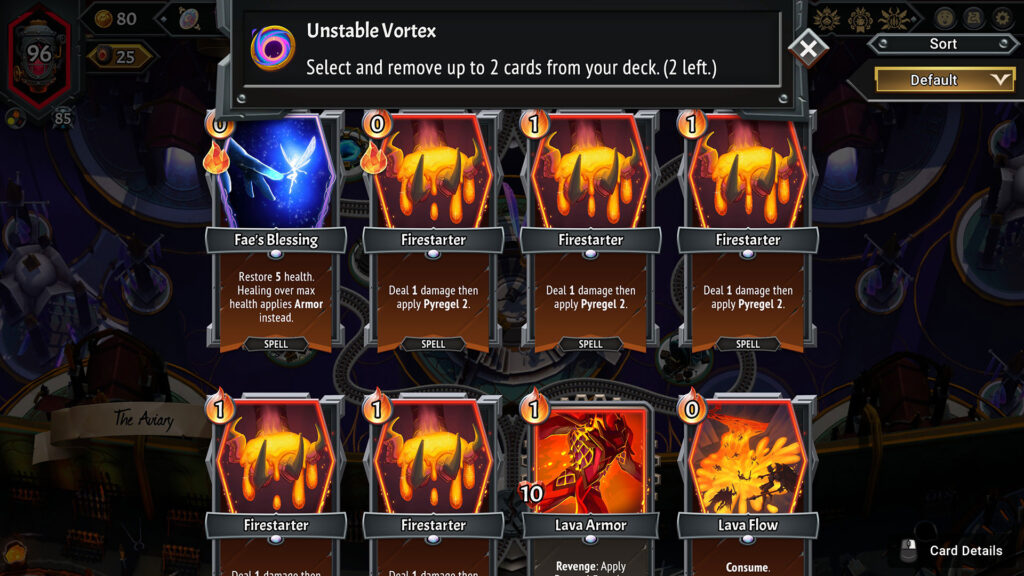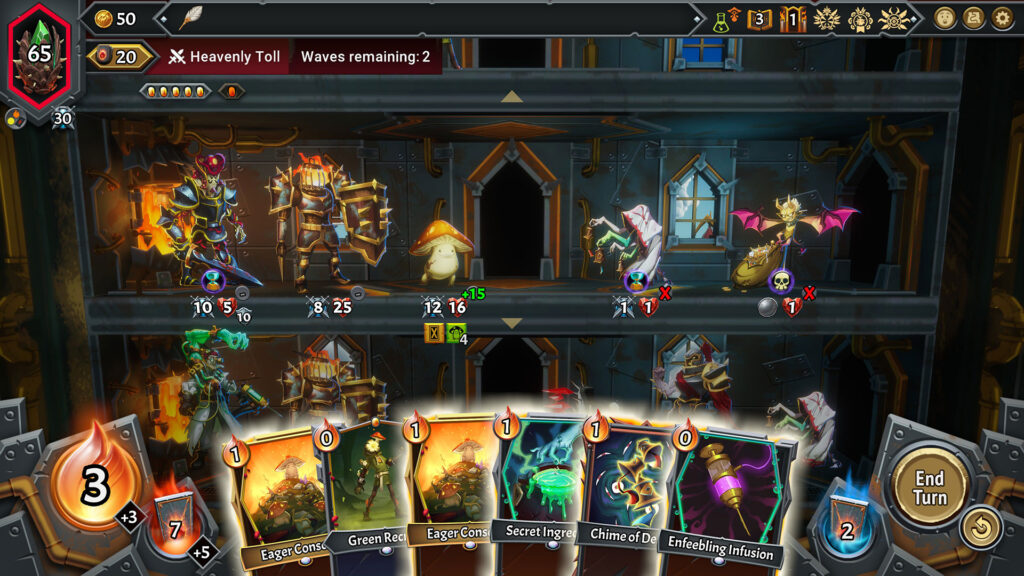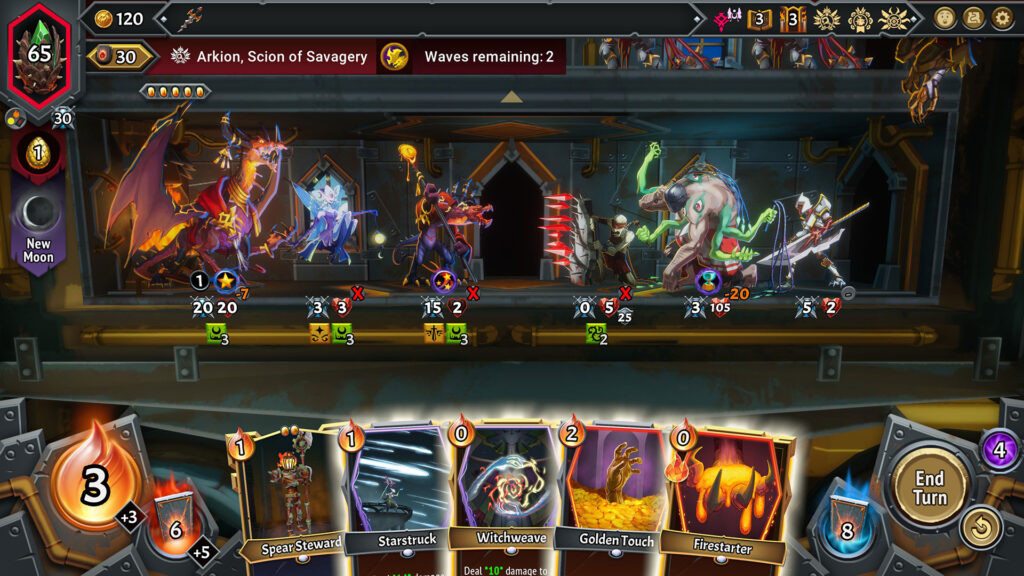Quick Verdict
For many Monster Train fans, Monster Train 2 is essentially the perfect sequel. It precisely understands what fans loved about the original game and delivers more of it. The sequel expands the addictive, tactical deck-building core with new clans, an engaging Endless Mode, and numerous key quality-of-life improvements, including highly-requested features like undoing turns and restarting battles. These enhancements contribute to making Monster Train 2 feel exactly how a sequel should: both familiar and polished.
Those who loved the core gameplay loop of the original and wanted more—new clans, new cards, fresh strategies—will find exactly what they’re looking for in Monster Train 2. If you were hoping for something that changes the genre, you’ll likely be disappointed. It strictly adheres to the saying, “if it ain’t broke, don’t fix it.” After all, it’s not easy to properly execute on the formula of easy to learn, hard to master.
Monster Train 2 Review Video
All Aboard

Some developers say it’s harder to follow up a hit game than to launch one in the first place. That’s because you now have expectations from an established player base, and we all know gamers always have an opinion or two of what they feel like developers should be doing. Do you take some risks with the sequel so it feels like something entirely new, like Nintendo did with both Super Mario Bros. 2 and Zelda II: The Adventure of Link? Or do you go the route of something like classic DOOM and DOOM II, where it clearly uses the same foundation but with expanded features and design? Some of the most successful sequels in the history of gaming manage to toe the line between the two philosophies, like Diablo II and Mass Effect 2.
Monster Train 2 falls more in the DOOM to DOOM II category than it does in the Diablo to Diablo II category. If you’re like me and sank hundreds of hours into Monster Train, you’ll find many aspects of this follow-up to be familiar, but you know something is different about it. The train, for example, is now ascending on the map, traveling from south to north, rather than descending to Hell in the original game. Map icons have been refined and the overall shop UI has been streamlined. Many of these UI changes aren’t even things I had an issue with in the first game, but when I went back to Monster Train to compare the differences, I found that everything in Monster Train 2 just made more sense. Some of these changes might have been made with the Steam Deck in mind, given how well it plays on Valve’s handheld.
Roguelike Railway

For newcomers, the Monster Train franchise places a unique twist on the roguelike deck-building genre by adding multi-floor battles and diverse clan mechanics. Prior to embarking on Monster Train 2, players choose two clans—one primary, one allied—and a hero for each clan, although only the hero from the primary clan is playable. The selected hero for the allied clan affects the starting cards in the deck. New to the sequel is the ability to swap out the Pyre Heart, which sits atop the train and must be defended or you lose the run. These additional Pyre Hearts aren’t just visual variants, since they serve as meta-progression rewards that must be unlocked through gameplay. Each one grants a distinct power, ranging from earning gold whenever the Pyre Heart takes damage to permanently expanding the capacity of a random floor after battle. To keep things balanced, every special Pyre Heart also comes with its own starting attack and health values that are different from the default.
Both Covenant Ranks and Mutators return from the base game. Covenant Ranks are selectable levels that must be unlocked through successful playthroughs that add fixed modifiers to make the runs more difficult. For example, Covenant Rank 1 makes it so enemies are stronger and additional random cards are added to the starting deck. Mutators are also affixes that are similar to the effects added by Covenant Ranks, but up to three are chosen by the player. These can range from spells or units having additional cost to cards having fewer upgrade slots. The big difference with Mutators is that runs customized with them aren’t counted towards card mastery, Covenant Rank unlocks, or victory tracking. They’re really just there for increased customization if you somehow manage to get bored with the game.
Electric Emberloo

Both Covenant Ranks and Mutators are used in the new Dimensional Portal gameplay mode where Dimensional Challenges live. There are 21 in total and each challenge chooses everything for the player: primary and allied clans, Pyre Heart, and Mutators. The Dimensional Portal is the perfect challenge for experts of the game, as you’ll need to have mastery over each clan’s archetypes in order to do a successful run. I found some of these to be quite challenging, while others were really fun when I managed to break the game with some very powerful builds. It’s also a great mode to learn how synergy works with each of the clans.
Some Monster Train veterans will be most excited to hear about the game’s other new mode, Endless Mode. This is a new option that appears after the player manages to complete a successful run against Heaven’s armies. It carries over your current deck so you can see just how powerful it really is. It’s fairly straightforward in that there is an endless series of battles, so long as the Pyre Heart lives. In between each series of battles, players choose between two options, each of which has one positive modifier and one negative modifier. Of course, enemies will also scale as the fight goes on in Endless Mode, with increasing attack, health, armor, and status effects.
Tactical Torment

At its core, the sequel doesn’t reinvent what made its predecessor so beloved. Instead, developer Shiny Shoe confidently doubles down on the game’s strengths. The central loop consists of drafting cards, strategizing unit placement across the three floors, and protecting the Pyre Heart at all costs. There’s an oddly satisfying rhythm of turn-based tactical placement while managing limited resources and responding to enemy waves. The best way I can describe this sequel is that it takes the core mechanics of the original game and deepens them. The introduction of the new clans and cards results in plenty of new strategies to discover, and veterans will have a lot to look forward to.
Central to the strategy in Monster Train 2 are the units and their placement. Each floor has a capacity designated by a resource, and units occupy a different amount of capacity. For example, each floor starts with a capacity of five, but that could be occupied by just two units—one being three cost and another being two cost. This cost is also different from a unit’s Ember cost, which is needed to play the actual card. In addition to floor capacity, each floor accommodates a maximum of seven units, regardless of how much you’ve expanded it. There are ways, however, to overflow each floor’s capacity and this plays a major role for certain clan combinations.
Strategy Station

Each battle consists of multiple waves of enemies, which typically enter the train from the bottom floor. There are some exceptions to this rule, with certain enemies spawning on other floors, and bosses freely traveling between the three. Enemies always attack first, unless your unit has the Quick affix, and the UI does a fantastic job letting you know how everything is going to resolve. Before you commit to your turn, you’ll see exactly what’s going to happen on that floor. You’ll know which enemy units will live and travel to the next floor, and which of your units will die. If you’re new to the series, it takes time to get accustomed to how everything resolves, especially since there are multiple affixes that can impact the order of operations.
I discovered the most refreshing change in Monster Train 2 was the ability to undo a turn or restart the battle altogether. When it comes to roguelike deck-building games, there’s always a puzzle to be solved and often there is a solution with the cards that you have. I found myself using undo turn quite a bit, which also helped deepen my understanding of how synergies worked. As you can imagine, the system can be very deep with the different combinations of clans and not everything is obvious at first glance. Undo turn is particularly impactful during boss fights, allowing you to experiment on unit placement and order of operations to maximize damage. Sometimes, it takes a lot of trial and error until that light bulb goes off and you understand exactly how a mechanic works with a particular combination of clans and cards.
Hell or High Cards

Following successful battles, players choose between two paths, each offering different rewards. Multiple shops include places to upgrade units or spells, or acquire artifacts, weapons, and room cards. Of course, these shops require currency which can be gained throughout your run. Prior to some battles, there’s also an option to add a modifier to earn additional currency. Other nodes on the map include locations that allow you to remove up to two cards from your deck, replenish Pyre Heart health, duplicate a card, or earn gold. All of these variables contribute to the depth that Monster Train 2 has to offer and make each run feel different than the last.
Some of the choices may come down to necessity, such as replenishing health for the Pyre Heart, while others largely depend on the clans you chose. Some clans benefit more from upgrading their units—for example, by gaining extra health, increased damage, multistrike, or even reduced room capacity. Other clans thrive when their spells are upgraded with more damage or reduced cost. Then there are the combinations where you’ll want to collect as much equipment as possible, or take advantage of synergies for artifacts and room upgrades. Learning and understanding how the cards in your deck synergize with the upgrade system is key to the depth of Monster Train 2’s systems.
Going Off Track

Unfortunately, some of the criticisms I had for Monster Train persist in the sequel. For starters, I still find the difficulty gap between the second-to-last battle and the final battle for each run to be quite wide. Several times I found myself with decks that were completely dominating through the first seven battles, and then I’d fail spectacularly in the final fight. These difficulty spikes were in the original and carry over in Monster Train 2, and sometimes it isn’t even attributed to getting a bad draw. In addition, certain clan and card combinations feel disproportionately strong, sometimes highlighting the limited pool of cards. While the UI did get noticeable polish, some elements still lack clarity, requiring constant mouseover for certain interaction effects.
Also, if you’re entirely new to the roguelike deck-building genre, Monster Train 2 might feel a bit overwhelming early on. I played dozens of hours of Slay the Spire before jumping into the original Monster Train, so the initial learning curve didn’t feel steep. However, I could see this game being confusing if you’ve never spent time in similar games or the prequel. This is worth noting, because I did get the impression that Monster Train 2 was mainly designed for a returning audience and could benefit from a better new player onboarding experience.
Demonic Duality

Some will say that Monster Train 2 stays notably safe, preserving its predecessor’s winning formula rather than boldly innovating. Those wanting revolutionary changes might feel disappointed, but I found the conservative approach to be intentional and thoughtful the more I played. This sequel succeeds because it remains confident in what made the original compelling and its appeal comes from refined iteration and deepened complexity instead of reinvention. The game’s narrative also reflects this design methodology, as there are subtle nods toward the original game when it comes to lore and characters. It’s not the game’s focus or the main reason to play it, but there’s enough there to move it along. It’s very likely some will criticize Monster Train 2 saying it’s more like an ambitious expansion than a sequel, but it’s a $24.99 title that easily offers dozens, if not hundreds, of hours of fresh gameplay—especially with daily and community challenges with leaderboards.
Monster Train 2 is the sequel I was hoping for, respecting the original game while expanding on experimentation. Players who loved Monster Train will find even more to love here, while newcomers will discover an accessible, yet deep strategic deckbuilder. The game is what it promises: more Monster Train, refined, expanded, and endlessly engaging. It’s a nice reminder that sometimes, the best innovation is knowing exactly what to leave untouched and exactly what to enhance. The game simply refines the edges, confidently knowing that the core was already excellent. If that’s what you’re looking for, Monster Train 2 is the sequel for you.
Monster Train 2 has a scheduled release date of May 21, 2025, for PlayStation 5, Xbox Series X|S, Switch, and PC. This review is based on a retail code provided by Big Fan Games on PC. While FullCleared has affiliate partnerships, these do not influence our editorial content. We may, however, earn commissions for products purchased via affiliate links.






















